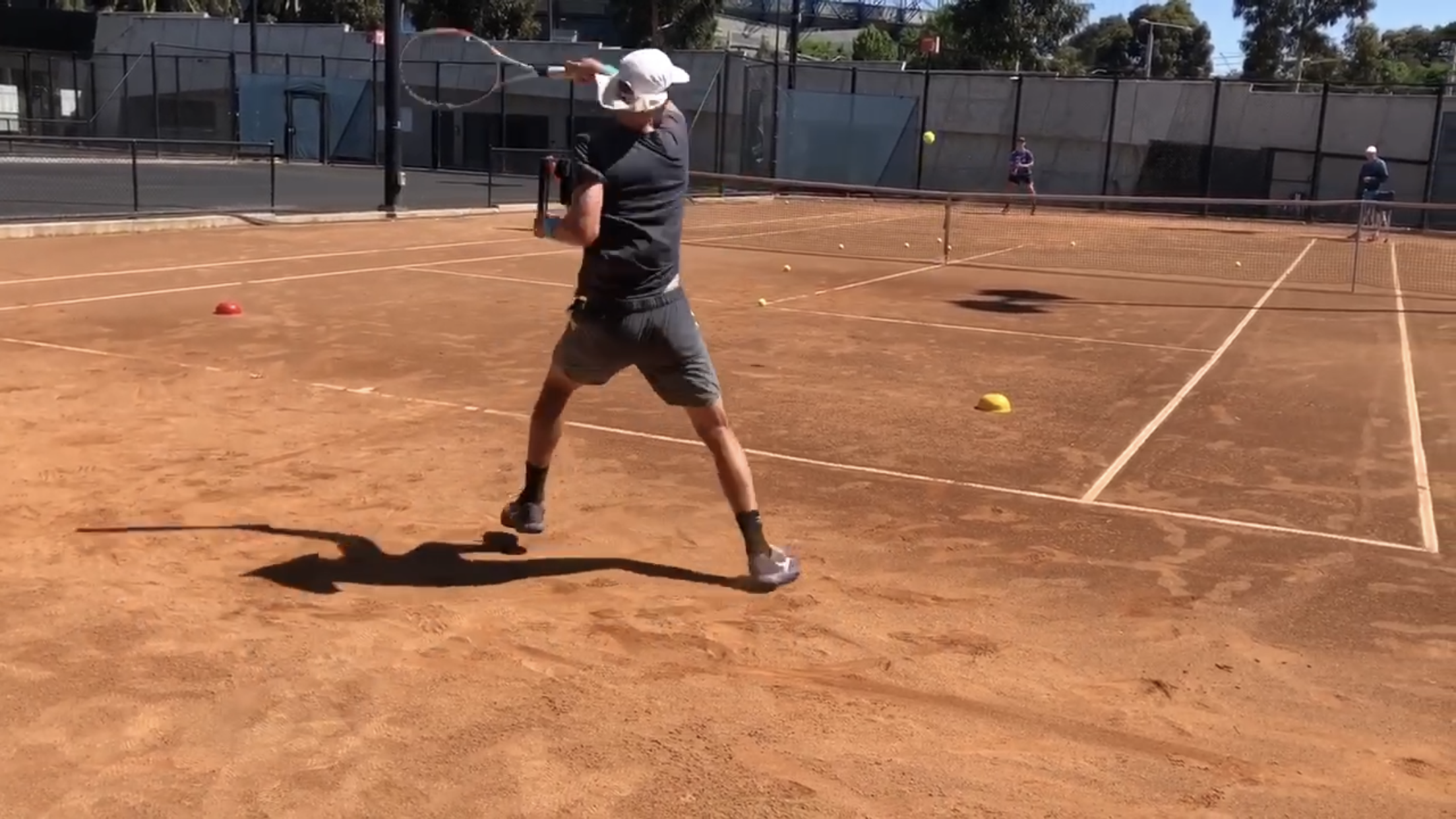Whether you’re a tennis player or a tennis coach, if most of your practice time is spent hitting balls from a basket or hand feed, you might need to rethink your strategy.
Before I dive into this argument, let’s set the stage. There are essentially 2 types of practice balls that a player can receive. A live ball and a dead ball.
Live Ball
A ‘live ball’ is a ball that is in play - i.e. it’s part of an exchange between 2 players (or 4 if we’re talking about doubles). Playing a tennis match is an example (and the truest form) of a ‘live ball’ environment. Other live ball drills might include a simple crosscourt exchange between 2 players or a rally game that begins from the baseline.
Dead Ball
Below is Wayne Elderton’s definition of a dead ball feed (which I really like):
‘Dead ball’ feeding means delivering balls to a player (from a basket, etc.). This type of feeding provides plenty of repetition but it comes with the possibility of producing ‘brainless strokers’. Players know how to stroke but not how to play because they learn how to perform technique without knowing what they should do with it.
A good way to imagine this is to picture a practice court to match court continuum.
A tennis match would be on one end of the continuum and can be classified as the most realistic form of ‘live ball’ training. On the complete opposite end of the continuum (the least realistic end), we might have a drop feed - in other words, where you simply drop the ball in front of you and hit.
Here’s a more in-depth look at what that continuum might look like:
Least Realistic to Most Realistic
Drop feed
Hand feed
Racquet feed
Stationary hitting (ex: crosscourt - see vid below)
Predictable hitting with movement (ex: 1 cross 1 line)
Unpredictable hitting w movement (ex: 1 player receiving random shots hit anywhere)
Semi-cooperative point-play (ex: hit 2 crosscourt then play or serve to the BH + play)
Non-cooperative point-play (ex: practice sets + matches)
Now, I’m not saying that using a dead ball feed isn’t beneficial, it surely can be. And while I get the position that it offers added repetitions, I’ll argue that a lot of these reps can be practiced in a live ball manner anyway.
Below is an example of a player practicing their shoulder/racquet prep (what many will call a unit turn). It’s my belief that practicing your ‘prep’ during a live ball exchange is more beneficial because preparation is all about timing + rhythm.
Every ball will be hit from a slightly different position, with more or less shape and more or less movement and so on. Picking up these cues from the environment is what leads to the correct timing of various actions - like the ideal moment to initiate the preparation phase of a groundstroke.
Why Are We Treating All Strokes Like Serves?
The only stroke in tennis that’s performed in more of a closed format is the serve. The server has control over the toss, the strike and the target they wish to hit towards.
Hitting serves out of a basket - I’ll confirm - is mostly ok because it’s specific (i.e. it’s how you’ll serve in a match setting anyway). But while serving out of a basket - and at targets - might be more realistic than receiving a dead ball feed, it’s still not as realistic as hitting serves with a returner on the other side of the net.
In any case, doesn’t it seem odd that we treat all of the strokes in tennis in the same manner as the serve? All the other shots in tennis occur in an open format. Recall that an open skill is one where the environment is unpredictable.
When playing a tennis point, we don’t know which direction our opponent will hit the ball. We might have an idea based on experience - and the knowledge of patterns of play that come along with that experience - but even if we have a sense of where our opponent will play a shot, we don’t know how much speed will be on the ball, how much spin or how the ball will react as it bounces off the court.
My Final Point
Personally, I’ve coached elite players and have also been a team member for pros. Being in these environments, you’ll quickly learn that in the grand scheme of things, there’s very little dead ball feeding going on.
I once asked Marc Polmans - ATP tour player - how much basket feeding is involved in his practices. His reply was about 5-10% of his total practice time.
Yet I still see practices today that showcase the reverse, 90% of the total practice time being spent hitting from a dead feed!
There’s this notion that you won’t improve your technique if you don’t have someone feeding ball after ball out of a basket. I cannot disagree more. I have not hit a dead feed ball in over 15 years, and my own tennis has improved considerably over that time period.
Recall that at the base, technique is a function of tactics. This means that if you’re not hitting with some tactical outcome in mind - even during a crosscourt exchange - the training won’t transfer very well when you need it most…during matches!
I do want to reiterate - hand and racquet feeding can be useful. But they should be used as tools rather than the main bread and butter of a tennis practice.
Again, if you want to be better at tennis - and not just better at hitting strokes - reconsider your approach to practice. You won’t be disappointed.
Enjoyed this post? I’ve got a new resource coming out that will dive deep into live ball training (including hundreds of drills + games). Sign up to get more info + release date details.

